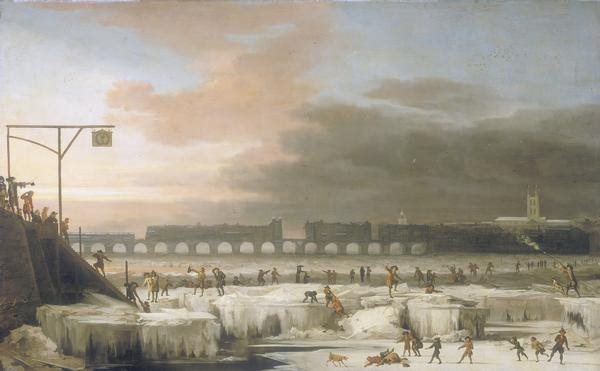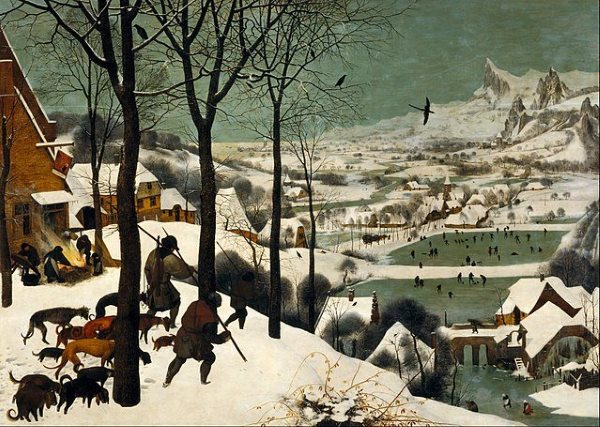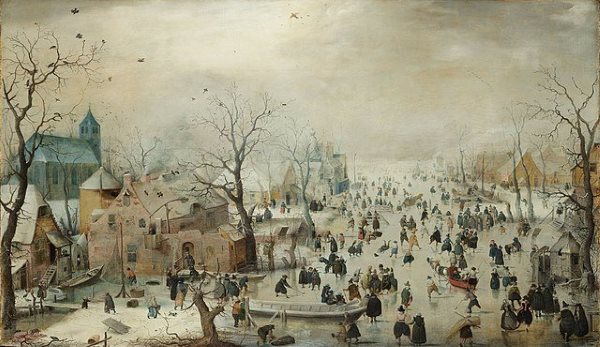The Little Ice Age: What Happened Around the World
Between 1300 and 1850, the Earth experienced a Little Ice Age whose cause to this day is not known.
During the period 950 CE to 1250 CE, the earth experienced an unusually warm period, which became known as the Medieval Warm Period (MWP) or the Medieval Climatic Anomaly. At their height, temperatures during that period were similar to those experienced during earth’s mid-20th-century warming period.
Following the Medieval Warm Period came a period of intense cold, which has become known as the Little Ice Age (LIA). The term “Little Ice Age” was coined by Dutch-born American geologist F.E. Matthes in 1939. The LIA began around 1300 CE and lasted until about 1850 CE.
Within that stretch, NASA’s Earth Observatory has described three particularly cold periods: one around 1650, a second around 1770, and the third around 1850.
LIA’s Worldwide Effects
Ice cores, cores of lake sediment and coral, and annual growth rings in trees showed that Greenland, Scandinavia, the British Isles, Europe, and North America all experienced cold, with temperatures dropping 1 to 2 °C (1.8 to 3.6 °F) below the average for 1000 to 2000 CE.
During the LIA, mountain glaciers expanded in the European Alps, New Zealand, Alaska, and the southern Andes. In Switzerland and France, the advance of alpine glaciers wiped out farms and villages. Cold winters and cool, wet summers caused crops to fail, and this leads to famines in much of northern and central Europe.
To the west, sea ice expanded around Iceland, cutting off its harbors and access to imported food. Iceland’s population fell by half. Icelandic sea ice went from zero average coverage before the year 1200, to eight weeks during the 13th century, and to 40 weeks during the 19th century.
In Greenland, the Norse colonies that had made it their home starved, and they vanished by the early 15th century. Greenland was almost completely cut off from the rest of the world by ice between 1410 and 1720. To the south, Lisbon, Portugal received frequent snowstorms.
In North America, between 1250 and 1500, Native American tribes experienced crop failures and began to decline. During the same period in Japan, the mean winter temperature dropped 3.5 °C (6.3 °F), glaciers advanced, and summers were marked by excessive rain and bad harvests.
In the Southern Hemisphere, glaciers advanced in Patagonia and New Zealand.
LIA’s Effect on Europe
The effect of the LIA on Europe was enormous. In Great Britain and the Netherlands, canals and rivers froze deeply enough for people to ice skate on them, and festivals took place on the rivers themselves.
On England’s frozen Thames River, the first frost fair took place in 1608, and the last took place in 1814. In 1677, artist Abraham Hondius (1631–1691) captured ice skaters on the frozen Thames River.

The LIA was first depicted by artists in the illuminated manuscript Les Très Riches Heures du duc de Berry, painted in 1412–1416.

Dutch painter Pieter Brueghel the Elder, painted such as famous winter landscapes as The Hunters in the Snow during 1565. And, Dutch painter Hendrick Avercamp painted Winter Landscape with Ice Skaters in 1608.


In Scandinavia in 1658, the Swedish army was able to march across the Great Belt to Denmark and attack Copenhagen. The winter of 1794–1795 was particularly cold, and the Dutch fleet was locked in ice in Den Helder harbor. A French invasion force took advantage of that fact and marched on frozen rivers into the Netherlands.
In 1622, the Golden Horn and the southern section of the Bosphorus froze.
Famine
Throughout Europe, crop practices were changed to adapt to the shortened growing season, but famines were common. There were famines in France during 1693–94, in Norway during 1695–96, and in Sweden during 1696–97. Almost 10 percent of the population of each country died as a result. During 1696–97 a fifth of the population of Estonia disappeared, and in Finland, a third of its population disappeared.
People couldn’t even drown their sorrows in a glass of wine since viticulture, the raising of grapes, disappeared across Europe.
A Ray of Light in the Darkness
It was during the Little Ice Age that the violin and cello maker Antonio Stradivari produced his instruments. It is thought that the colder climate made the wood used in his instruments denser than during warmer periods, and this resulted in their unique tone.
According to the science historian James Burke, the LIA inspired the use of buttons and button-holes, thermal underwear, fireplace hoods, and enclosed stoves.
Causes
The causes of the LIA are still not known, while potential candidates are reduced solar output, changes in atmospheric circulation, and volcanism.
Low sunspot activity is associated with lower solar output, and two periods of unusually low sunspot activity occurred during the Little Ice Age: the Spörer Minimum (1450–1540) and the Maunder Minimum (1645–1715), which is named for astronomer E.W. Maunder who discovered the absence of sunspots during that period. Both of these coincide with the coldest years of the LIA in parts of Europe.
Another possible candidate is a reversal of the North Atlantic Oscillation (NAO). This is a large-scale atmospheric-circulation pattern over the North Atlantic and adjacent areas. During its “positive” phase, the track of North Atlantic storms is centered over the British Isles and Northern Europe. During its “negative” phase, cold Arctic air from Russia moves over northern Europe.
A final candidate is volcanic eruptions which propel gases and ash into the stratosphere, where they reflect incoming sunlight. In 1783, Iceland’s Laki volcano erupted, and in 1815, the Tambora volcano on Sumbawa Island erupted.
 SHOW COMMENT ()
SHOW COMMENT ()










